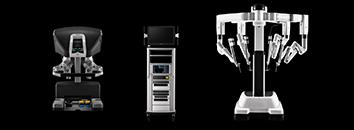Department of General Medicine

A warm welcome to the Department of General Medicine. The most common practice of General Medicine involves an intense process that covers the majority of specialties inside hospital premises. General Medicine involves anything related to the prevention, diagnosis, and management of several forms of disorders and diseases, including other hospice interventional processes. The doctors who specialise in general or internal medicine are called internists or physicians in common.
In addition to top-rated research and healthcare training, Gleneagles Aware Hospital is regarded as amongst the best hospital for general medicine in Hyderabad metro city. Not only this centre is amongst the best internal medicine hospitals in Hyderabad but is also known for having highly experienced physicians and medical professionals in-house. Some of the successful medical procedures that fall under general medicine criteria are Immunology, Tropical Medicine, Rheumatology, Dermatology, Cardiology, Neurology, and others. Sometimes, counselling and Rehabilitation also account for General Medicine, depending upon the medical issue.
Our centre is one of the best hospitals for general medicine in Hyderabad for having the most successful diagnostic measures in the city. The methods we follow here will benefit you by getting an early diagnosis and thus starting the treatment immediately. It is vital to a fast recovery, which is promised only from the best internal medicine hospital in Hyderabad, none other than the ideal Gleneagles Aware Hospitals.
We have also employed the best state-of-the-art tools and technology for superior internal medicine diagnosis that gives the most precise clinical results than the regular ones. Our unique medical algorithms and other healthcare protocols make us the pioneer in a fast-diagnostic institute in the city. Some of the general medicine diagnosis, as stated before, are processed through the hands of expert doctors as present in the following, but not limited to the same:
- Colon and rectal surgeons
- Allergists
- Hospice and Palliative Medicine Specialists
- Immunologists
- Psychiatrists
- Infectious Disease Specialists
- Medical Geneticists
- Cardiologists
- Anaesthesiologists
- Physiatrists
- Neurologists
- Emergency Medicine Specialists
- Dermatologists
- Ophthalmologists
- Pathologists
- Gastroenterologists
- Preventive Medicine Specialists
- Nephrologists
- Pulmonologists
- Radiologists
- Urologists
- Critical Care Medicine Specialists
Our Doctors – Physicians/Consultants/Doctors
With over several medical diagnoses, treatment options for 100+ medical conditions, the best General Medicine doctors in Hyderabad with other specialists, and international standards of care and treatment, Gleneagles Aware Hospital is ideally the right choice for a complete recovery. Our focus is both on physical and mental health, and thus we cover both general medicine with other psychological perspectives such as Counselling, Guidance, Rehabilitation, Behavioural Therapies, and more. Experience internal medicine treatments that are quick, safe, and better for a complete lifetime recovery.
Why Choose Gleneagles Aware Hospitals for General Medicine?
The major focus of Gleneagles Aware Hospital is to make people healthy and live a sustainable living without any medical relapse or recurrence in the future. This department has some of the best general medicine doctors in Hyderabad on board, who take pride in their years of training, exposure, and international treatment standards and promote a quick recovery process.
In the case of General Medicine, it is very important to opt for the best solutions as it greatly affects your general, physical and mental health. Renowned as one of the best General Medicine hospitals in Hyderabad, we assure you to be attended by the best General Medicine doctors in Hyderabad. Our abled doctors put forward their expertise and experience to provide you with solutions personalised to your medical needs. We provide you with the best medical facilities and infrastructure to aid our patients, making us one of the best internal medicine hospitals in Hyderabad. A wide range of diseases is attended to at our premises from general sickness to complex and chronic disease management. Some services we offer include:
- Diabetes management
- Mental health assessment
- Education Programs
- Blood Pressure checkup
- Treatment for Asthma
- Treatment for Allergies
- Lung Infections
- Treatment for Chronic Cough
- Treatment for Sinusitis
- Treatment for Tuberculosis
- Treatment for Pneumonia
Our comprehensive and collaborative treatment ensures that you get back to your regular life routine as soon as possible. We take pride in bringing modern technologies from around the globe for the best probable diagnosis and treatment by world-class measures. We study the patient with the best possible consultation before referring you to a specialist if required. Our general medicine doctors specialize in internal medicine to provide trauma-less aid to their patients.
Our General Diagnostic Capabilities:
The very first step in general diagnosis is detection by knowing the symptoms of the disease. Getting familiar with the patient’s medical history is the next important step in this case. Depending on this, various tests like urine test, blood test, stool test, etc. is carried out and further treatments will be finalised. Mental and emotional health analysis of the patients is also important in numerous cases. Also, a physical examination is another important aspect of the general medicine department.
- Anatomical Observation – Studying the physical body for observing any changes, alterations, abnormalities, or differences.
- Medical Status Examination – Assessing the patient through questions, tests, inquiries, and more. Helps in studying issues with childhood, teenage years, and respective age strata.
- Pathological Studying – Understanding the patterns of changes or deviations in terms of anatomy and physiology.
- Pedigree Analysis – Recovering history of medical issues using charts, questionnaires, assessment sheets, to know the family background for detailed diagnosis.
- Medical Tests – Using procedures such as X-ray, CT scanning, PET, MRI, etc. to get an accurate picture of the medical complaint.
- Biopsy – A highly effective diagnostic procedure through means of getting samples and skin cells from the individual’s body.
- Laboratory Tests – In-depth analysis of the case by using techniques such as blood tests, urine sampling, etc. according to the condition being tested.
Our Doctors
View all
Dr Vivekananda Reddy N
Consultant
MBBS, MD (General Medicine)
Different Diseases, Conditions & Disorders Treated at the Department of General Medicine?
After the recognition of the signs and symptoms, our doctors will suggest the best option to choose from for the treatment process to begin. There are multiple numbers of disorders, diseases, and medical conditions that are treated at Gleneagles Aware Hospital. Our internal medicine specialty teams are skilled enough to manage and treat both common and rare medical conditions, regardless of gender, age, time, and causal pattern. Some of the common medical illnesses that our doctors treat and cure include the following and not restrained to the same:
- What makes Gleneagles Aware Hospital the best hospital for general medicine in Hyderabad?
Gleneagles Aware Hospital has a team of highly experienced physicians and medical professionals in-house for general medicine criteria: immunology, tropical medicine, rheumatology, dermatology, cardiology, neurology and others, making it the best department of general medicine in Hyderabad.
- What does General internal medicine include?
General internal medicine involves everything related to preventing, diagnosing, and managing several disorders and diseases, including other hospice interventional processes.
- What is a general medical doctor called?
Doctors specialising in general or internal medicine are commonly called internists or physicians.
- What all services are offered by General Medicine Hospital?
A few services offered by General Medicine Hospital in Hyderabad are: - Diabetes Management, Mental Health Assessment, Blood Pressure checkup as well as treatments for Asthma, Allergies, Lung Infections and more.
FAQ
Why Choose Us
-
PATIENT EXPERIENCE
Your care and comfort are our top priorities. We ensure that the patients are well informed prior to every step we take for their benefit and that their queries are effectively answered.
-
LATEST TECHNOLOGIES
The Gleneagles Hospitals' team stays up to date on the advancements in medical procedures and technologies. Experience the Future Healthcare Technologies now at Gleneagles Hospitals.
-
PROVIDING QUALITY CARE
Strengthening lives through compassionate care, innovative therapies and relentless efforts. It reflects in the DNA of our passionate team of doctors and dedicated clinical staff.










